
Endocrine System Hormones convey information

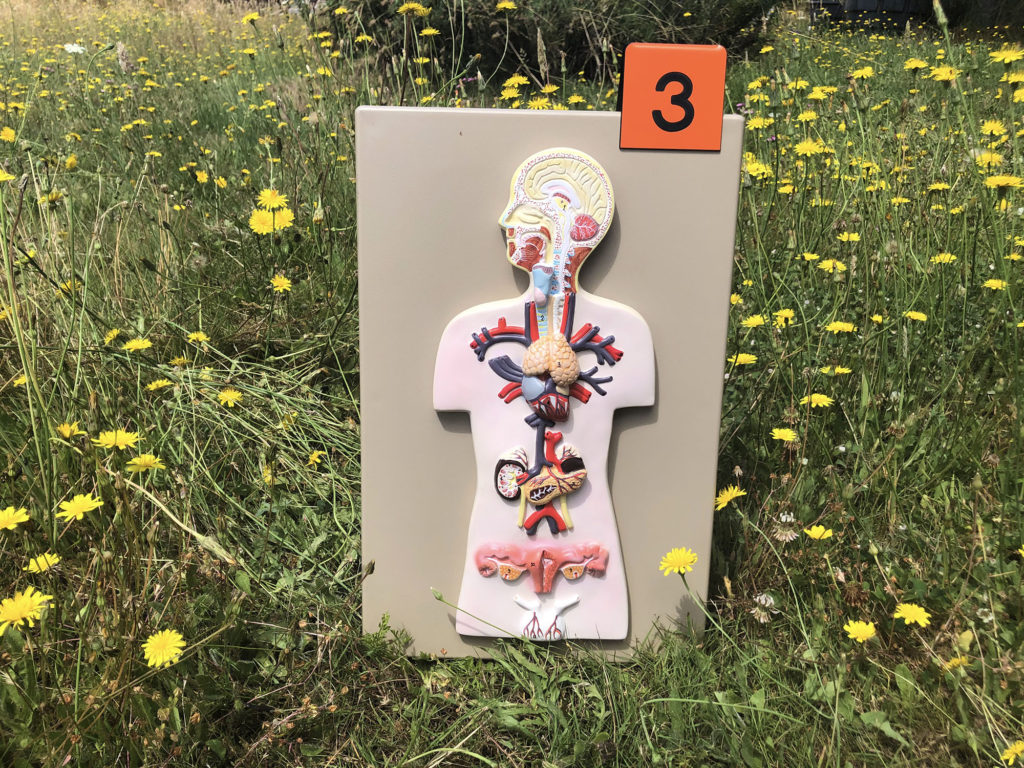
Endocrine System Objectives
- Locate various endocrine organs in the body.
- Explain how the nervous system and endocrine system connect, why this is important, and the hormones produced by the pituitary.
- Describe what hormones are and list the hormones produced by various endocrine organs.
We are beginning the endocrine system with a look at why the system is important, including examples of organ structure and function.
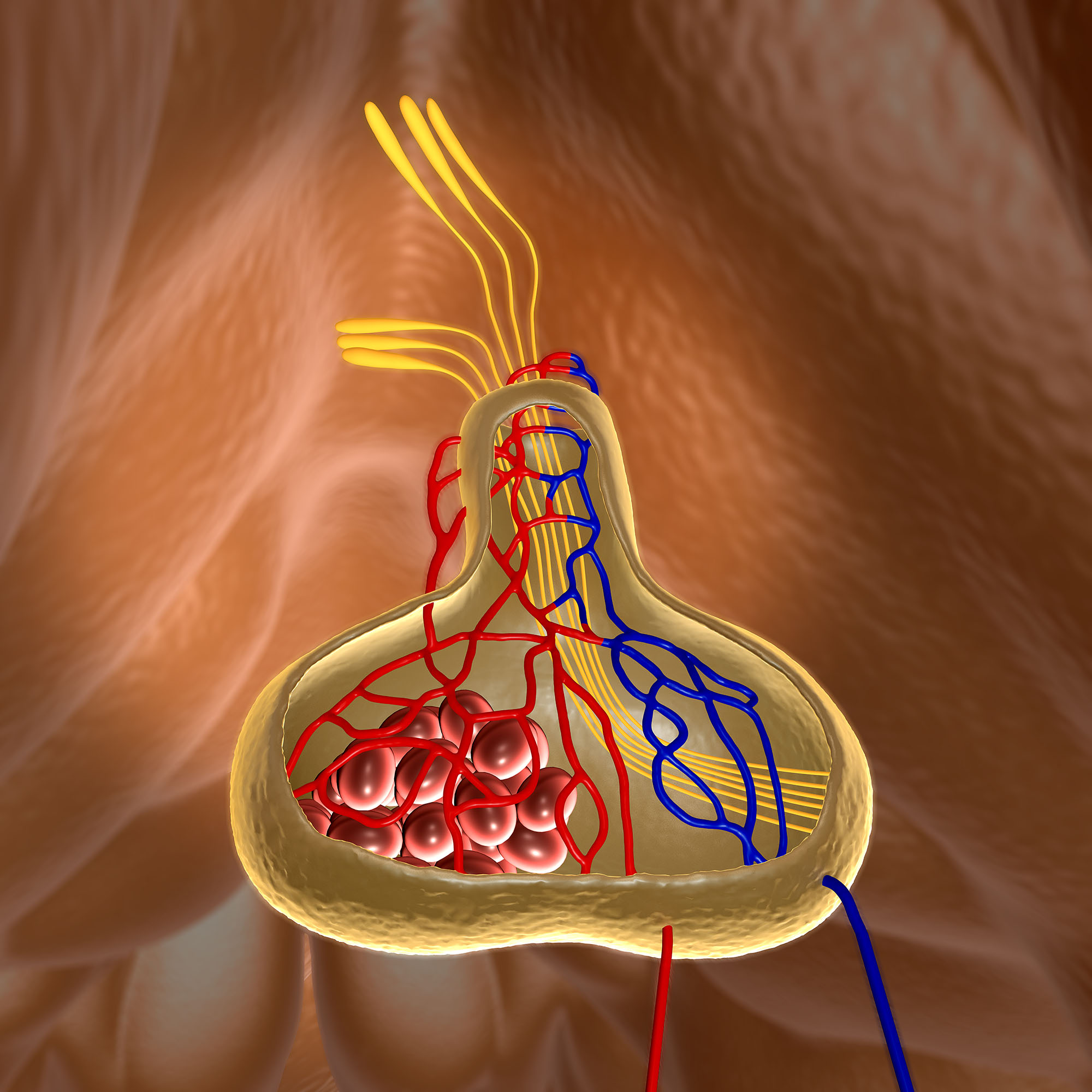
The nervous system and endocrine system are both involved in communicating with organs and coordinating responses. As a result, it is critical both systems work together and do not send mixed messages.
The hypothalamus portion of the brain (nervous system) directly connects to the pituitary (endocrine system). The pituitary in turn sends hormones through blood vessels to the hypothalamus.
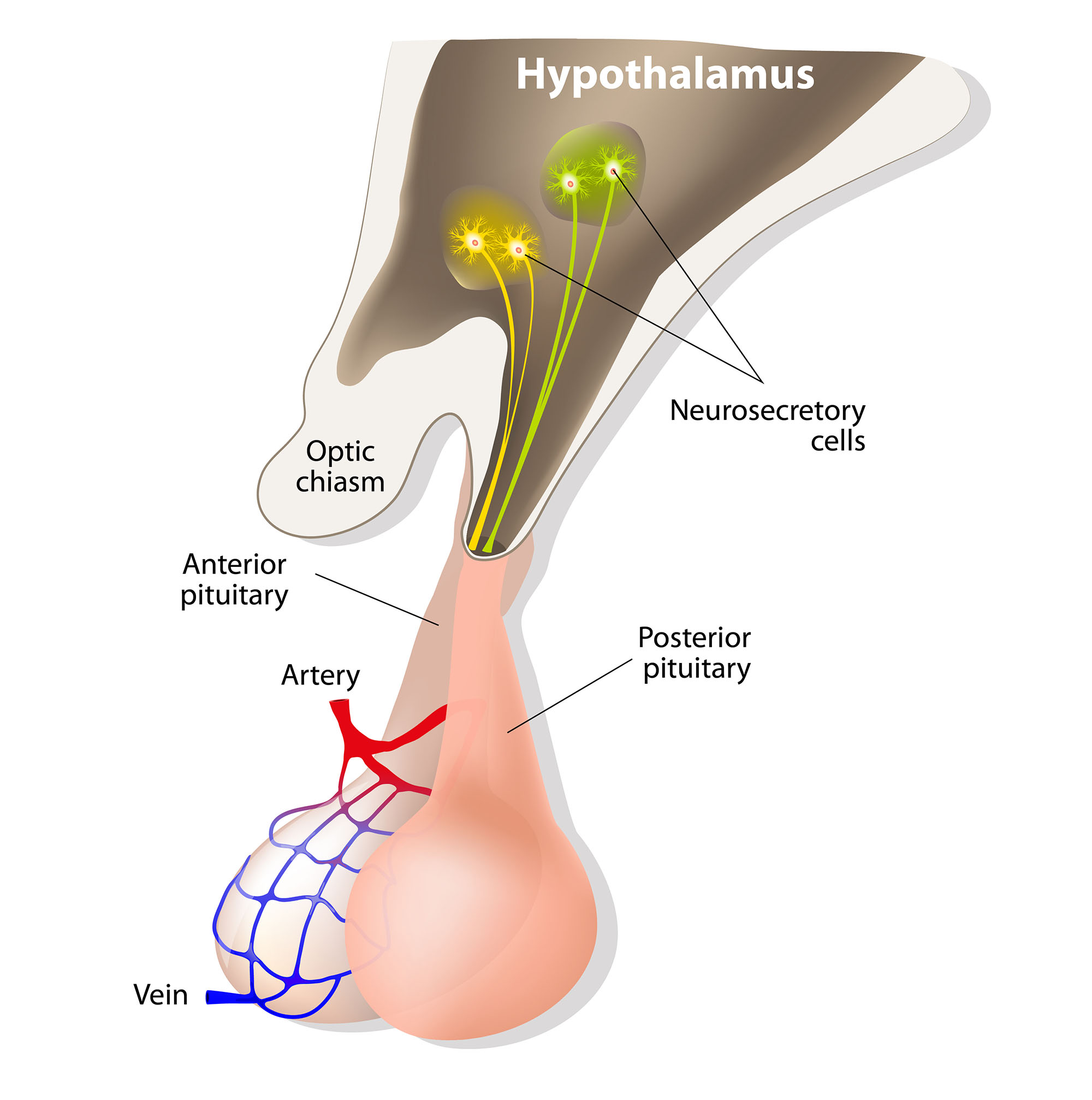
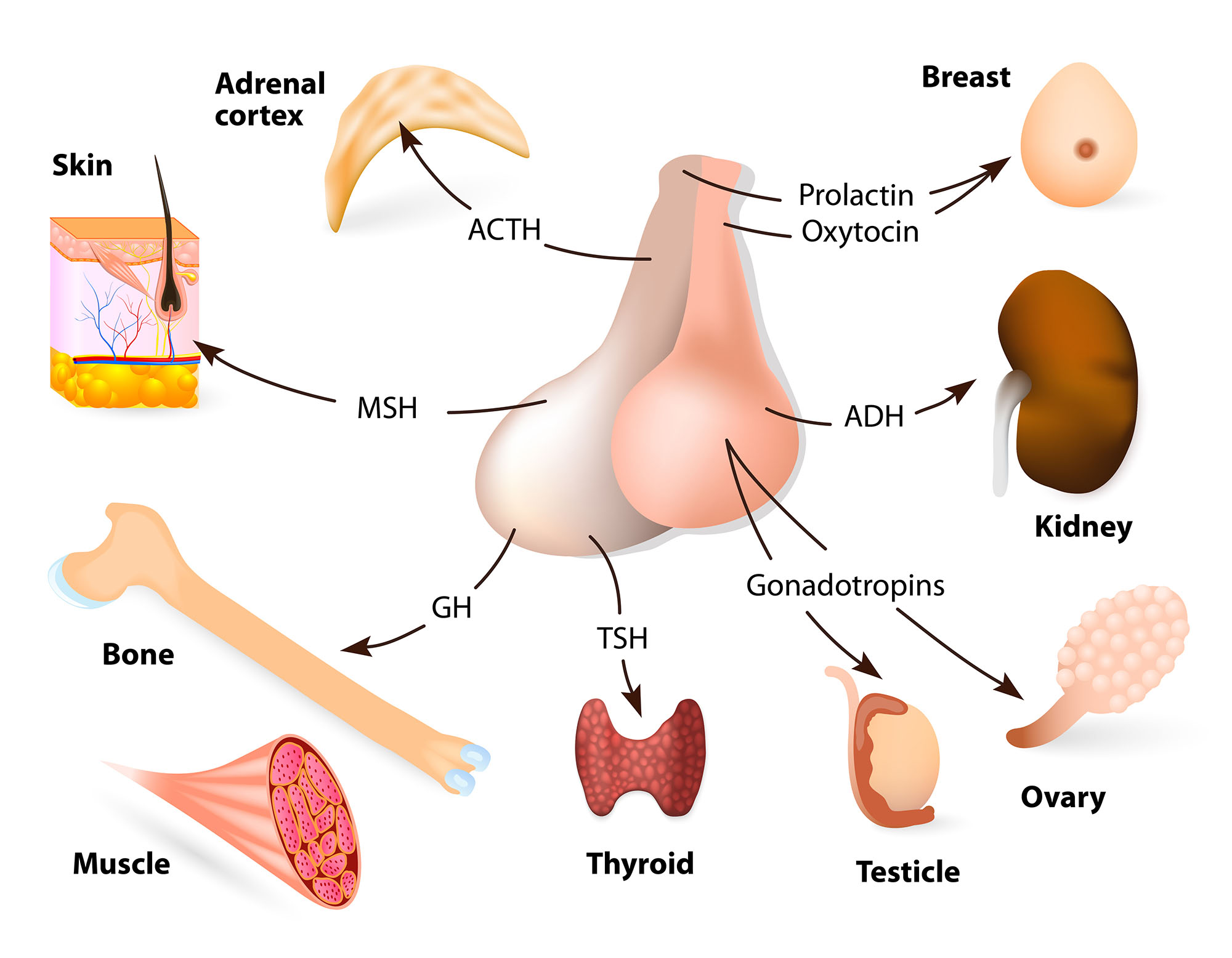
The pituitary releases a suite of hormones that impact organs throughout the body.
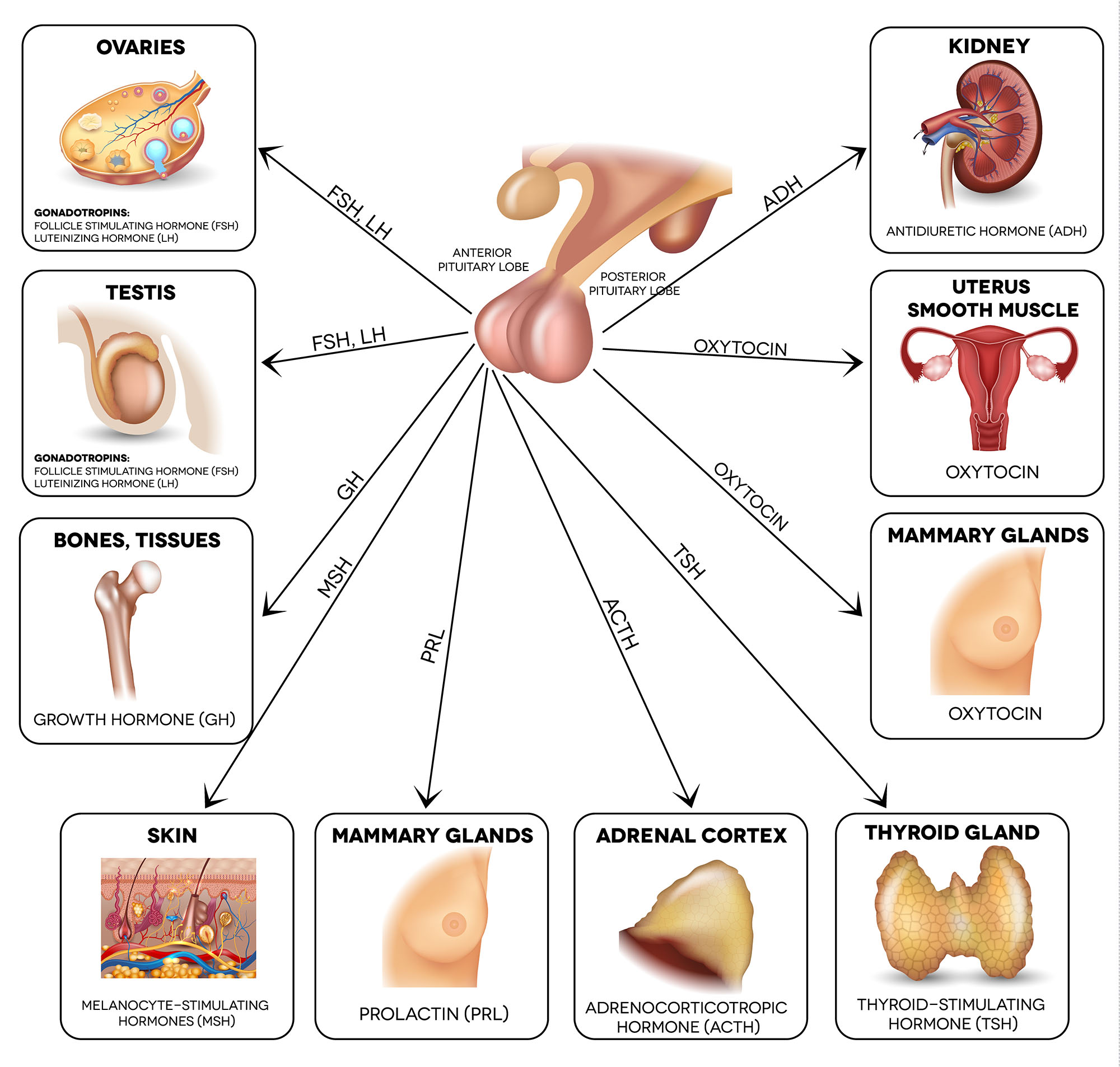
Take a moment to examine the range of effects the pituitary hormones have on various organs.
This video shows the pituitary location relative to other structures of the head we’ve already met in this course.

The pituitary’s hormones impact a number of other endocrine organs that produce hormones of their own.
Similar to a thermostat that turns off the heat when a room reaches a set temperature, some of the endocrine organs stop releasing hormones when a certain level is reached. This video provides an example.
These are the endocrine organs that will appear in this guide, including their hormones and the appearance of some of the tissues.
Hormones
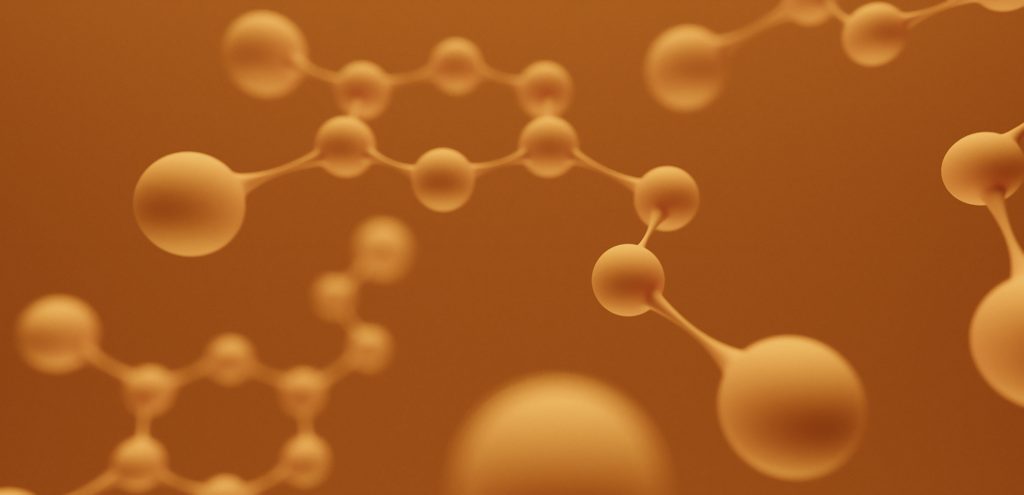
Hormones are molecules that cause cells to do something. When you think of a hormone, there are some familiar names like testosterone, estrogen, or growth hormone. All of these are chemicals that are released by cells that cause other cells to make products, grow, divide, or perform a number of other functions.
Most people assume that the nervous system does most of the controlling of body functions. However, hormones from endocrine cells also have significant impact as we will see in this section.

Understanding hormones is so critical within the endocrine system, we are reiterating some of the messages about the endocrine system in this video.
Many hormones have opposing actions and this video provides examples.

Hormones impact target cells that have specific receptors on their plasma membranes. The effects differ depending on the type of hormone.
The two figures below demonstrate that hormones cause a complex cascade of responses within a target cell. These responses can vary from increased production to decreased activity, depending on the hormonal trigger. Research is ongoing into the array of possible hormonal responses.
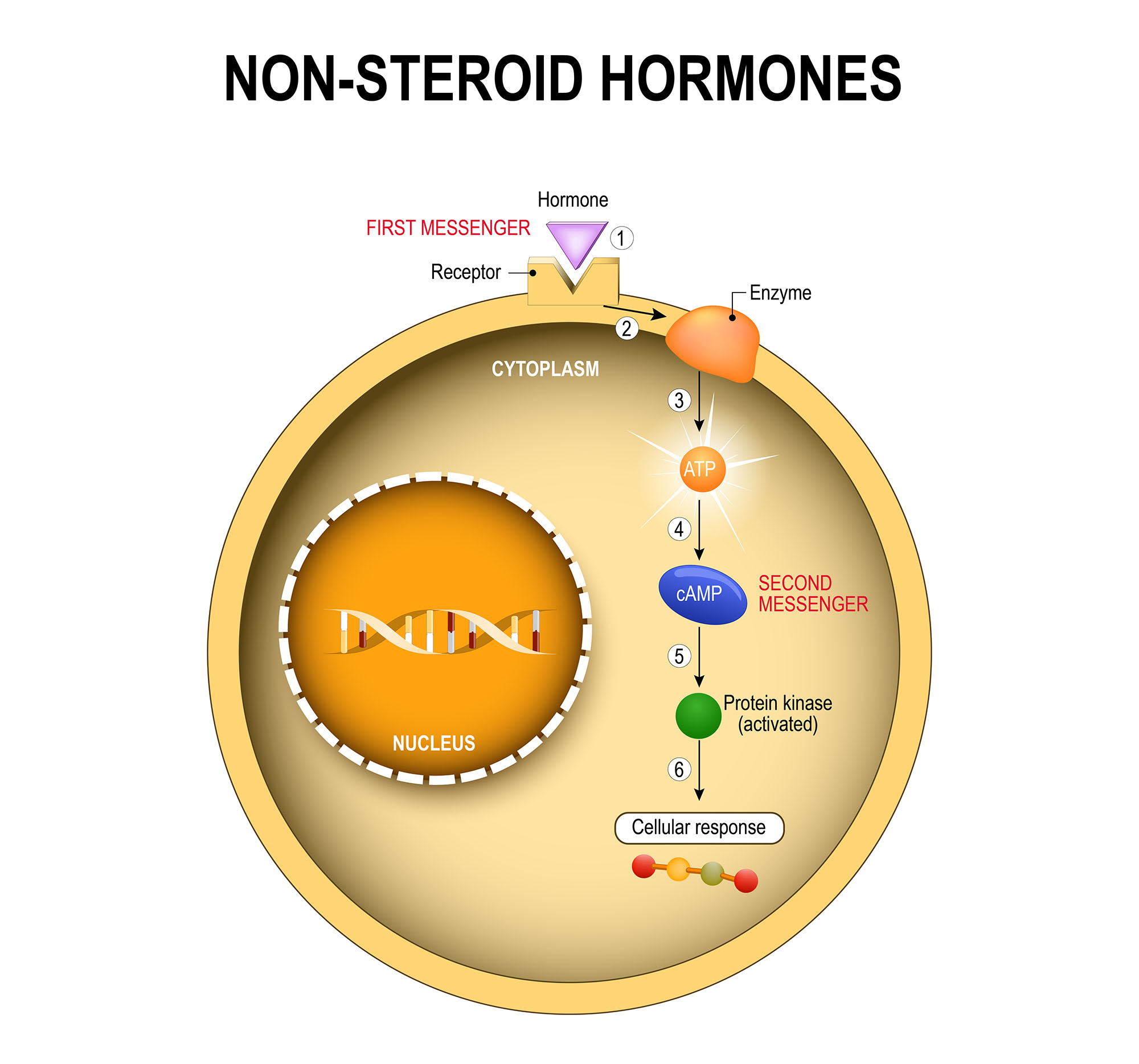
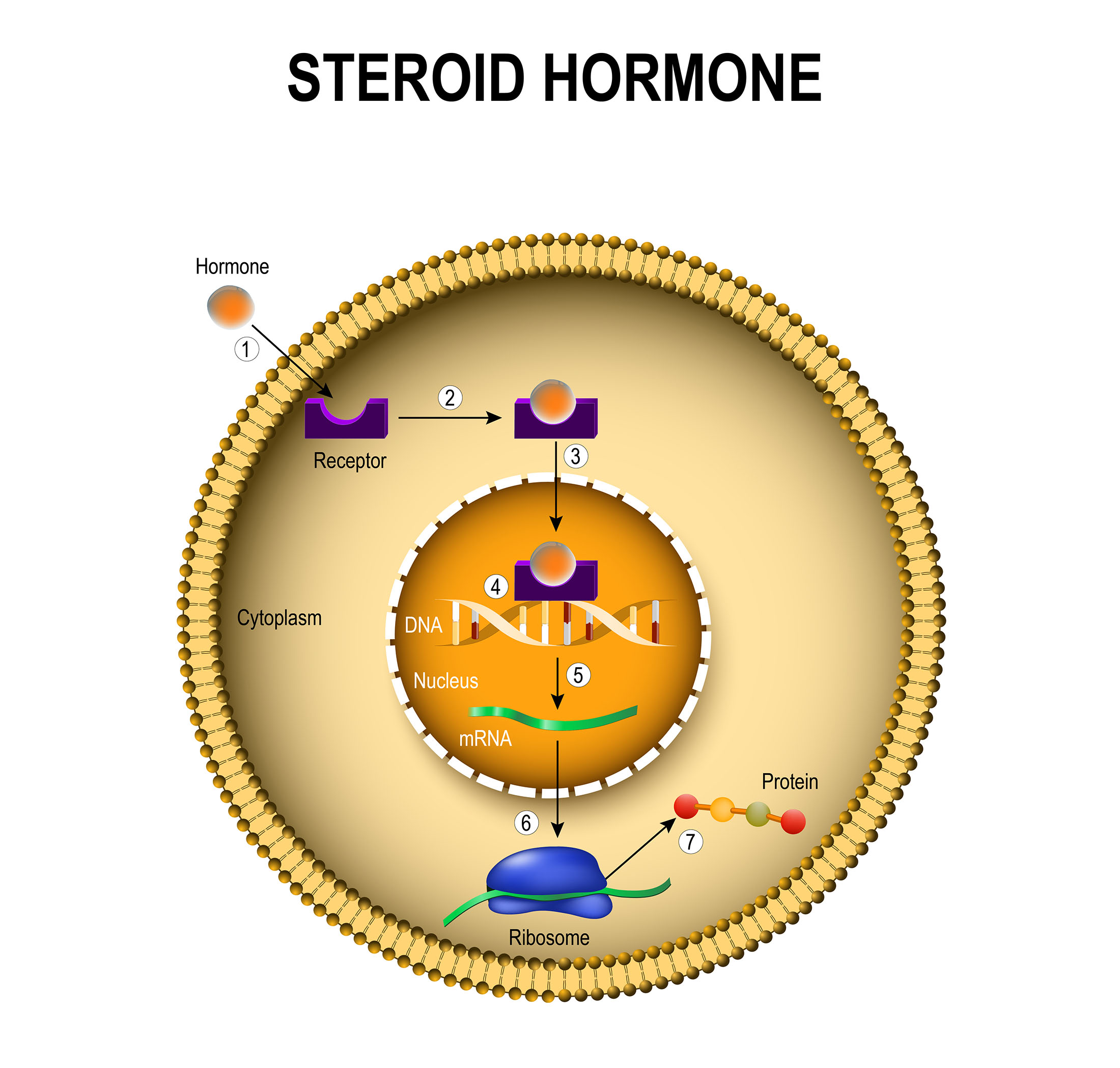
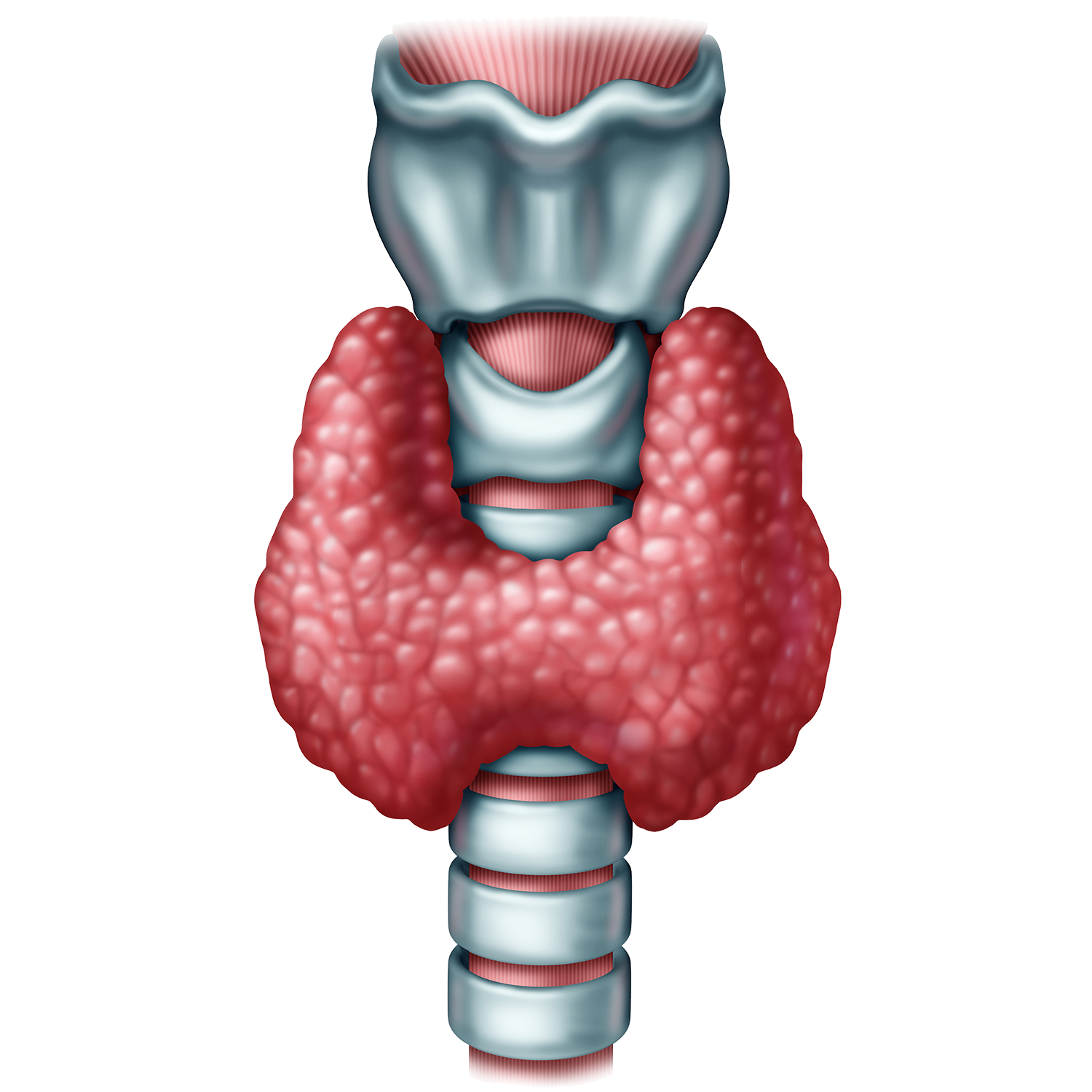
Thyroid
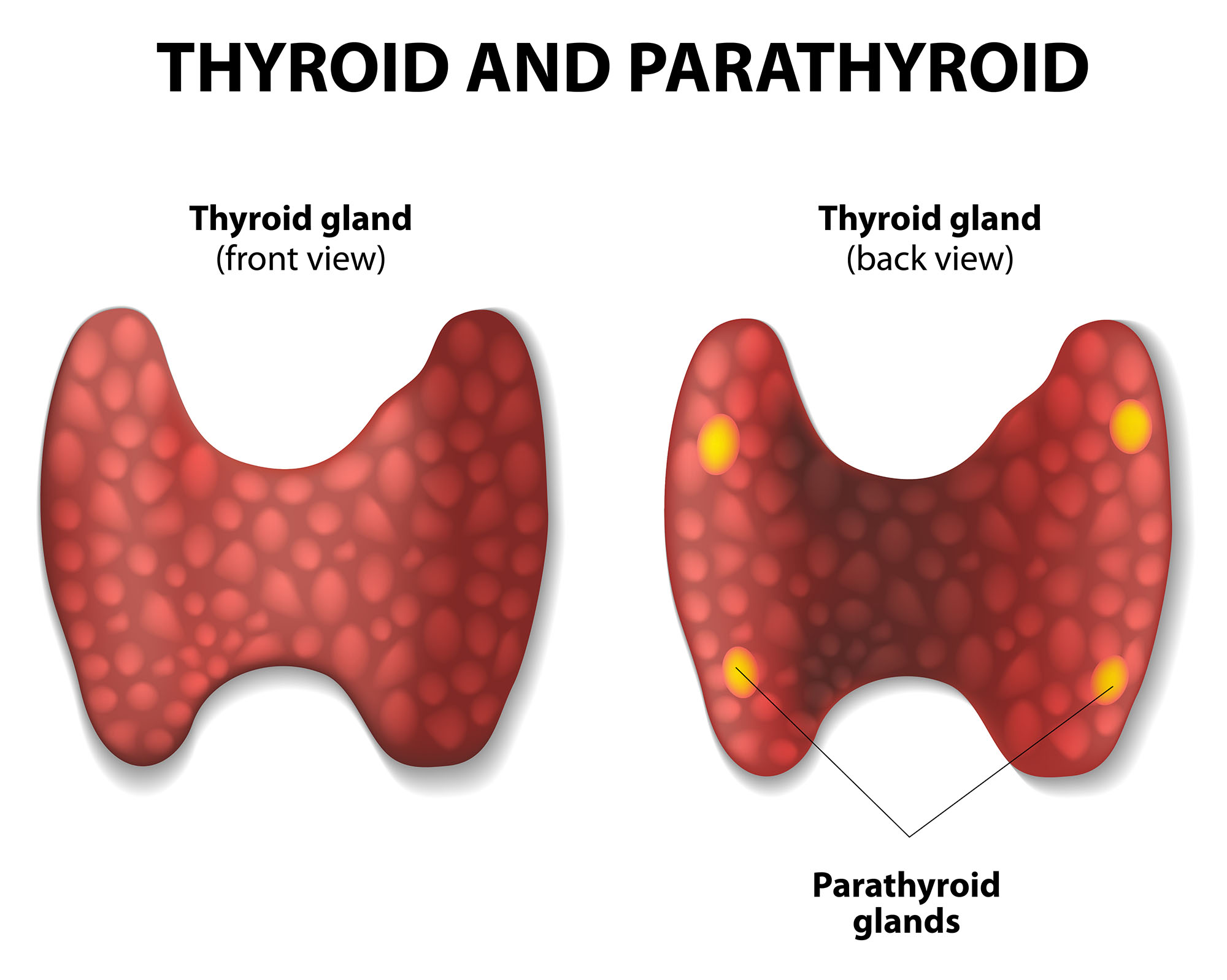
The thyroid and parathyroid glands are both located in the neck.
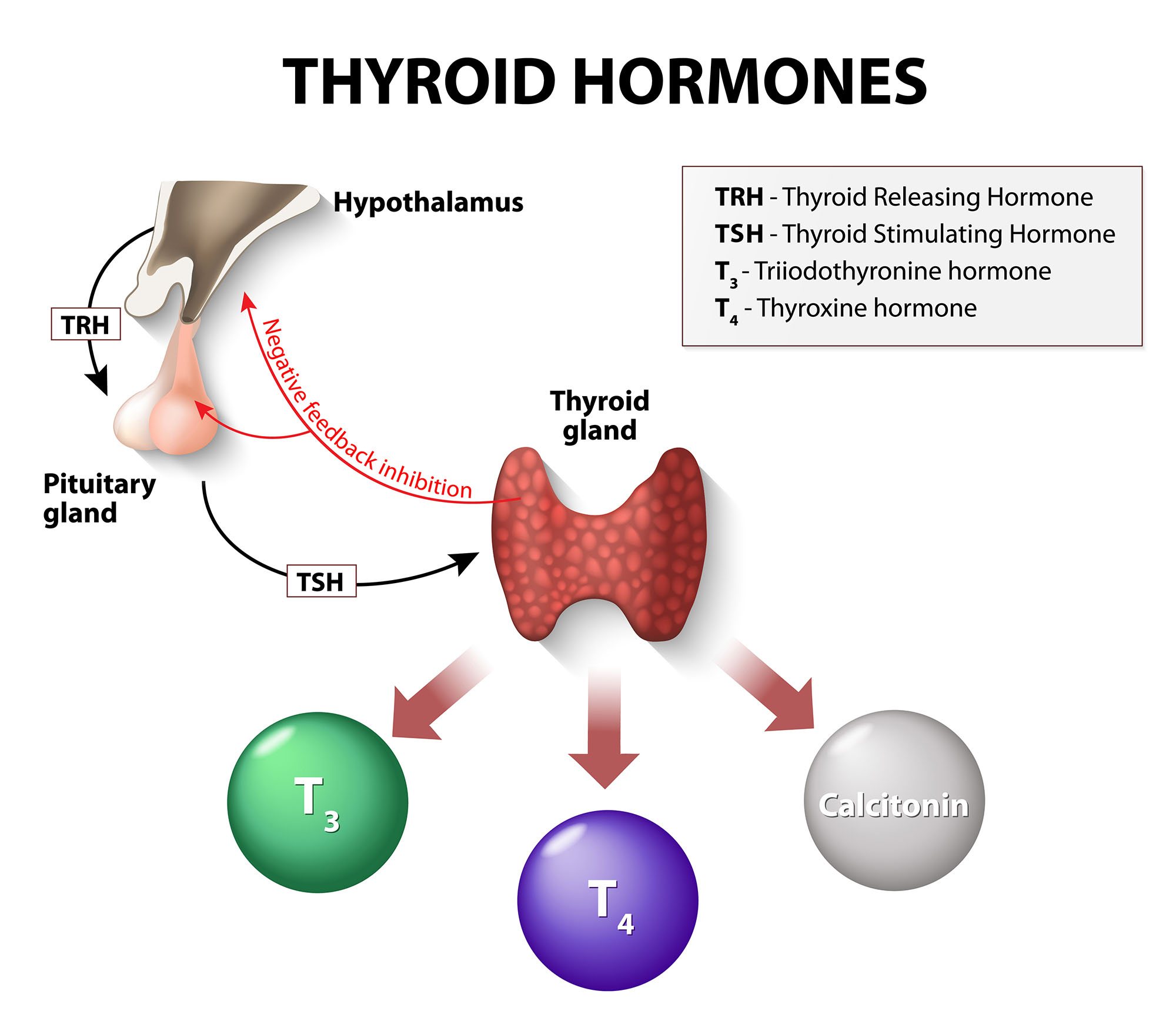
The pituitary increases thyroid activity by releasing thyroid-stimulating hormone. The thyroid produces different hormones, including calcitonin.

Parathyroid glands on the surface of the thyroid produce parathyroid hormone.
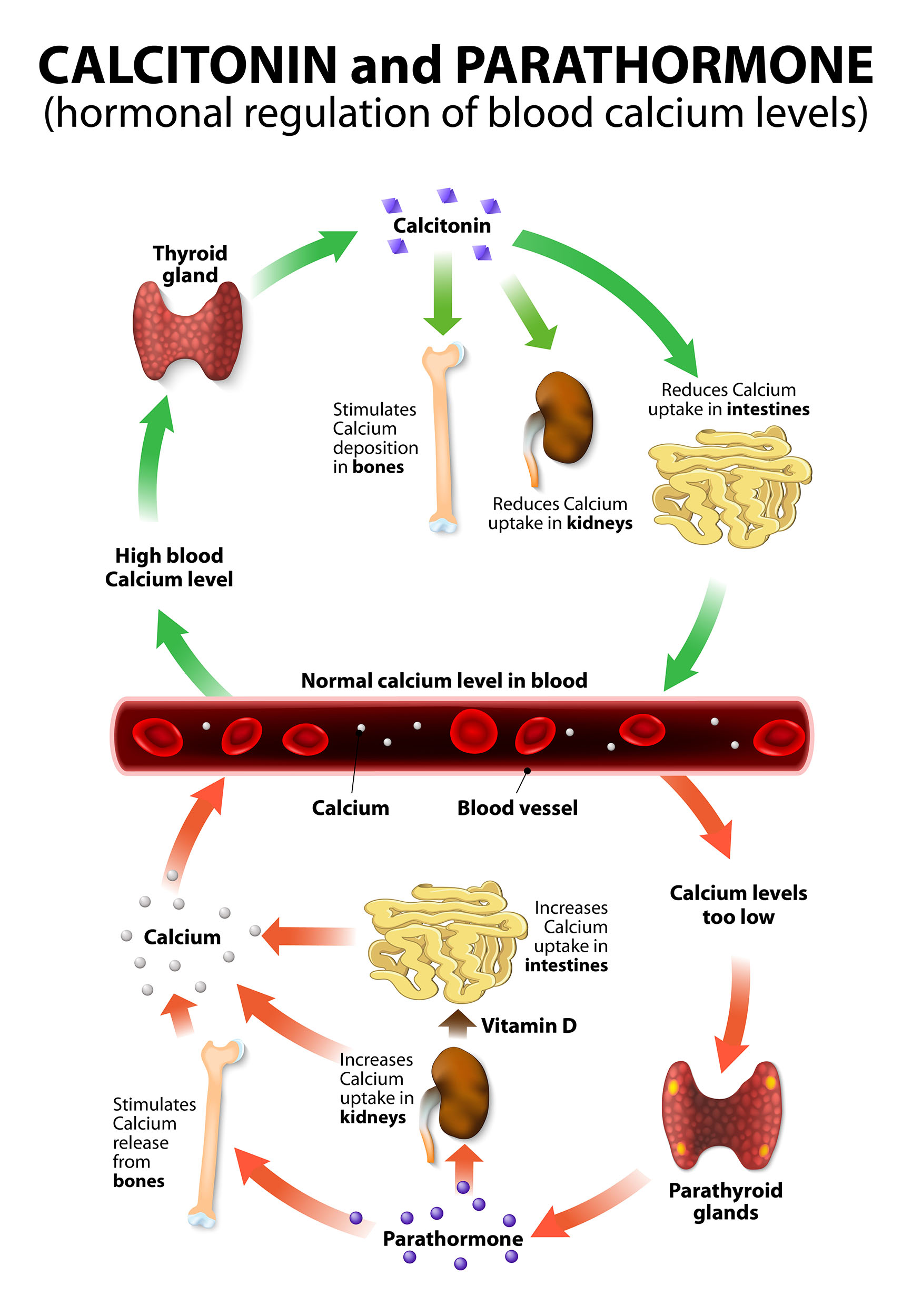
Calcitonin and parathyroid hormone have opposing actions intended to maintain blood calcium homeostasis.
Besides the bones, which organs have target cells for calcitonin and parathyroid hormone?
The thyroid gland can develop a variety of disorders. This video describe three of the most common thyroid diseases.
Thyroid follicles filled with colloid
Endocrine cells form tissues that are distinctive from one organ to the next.
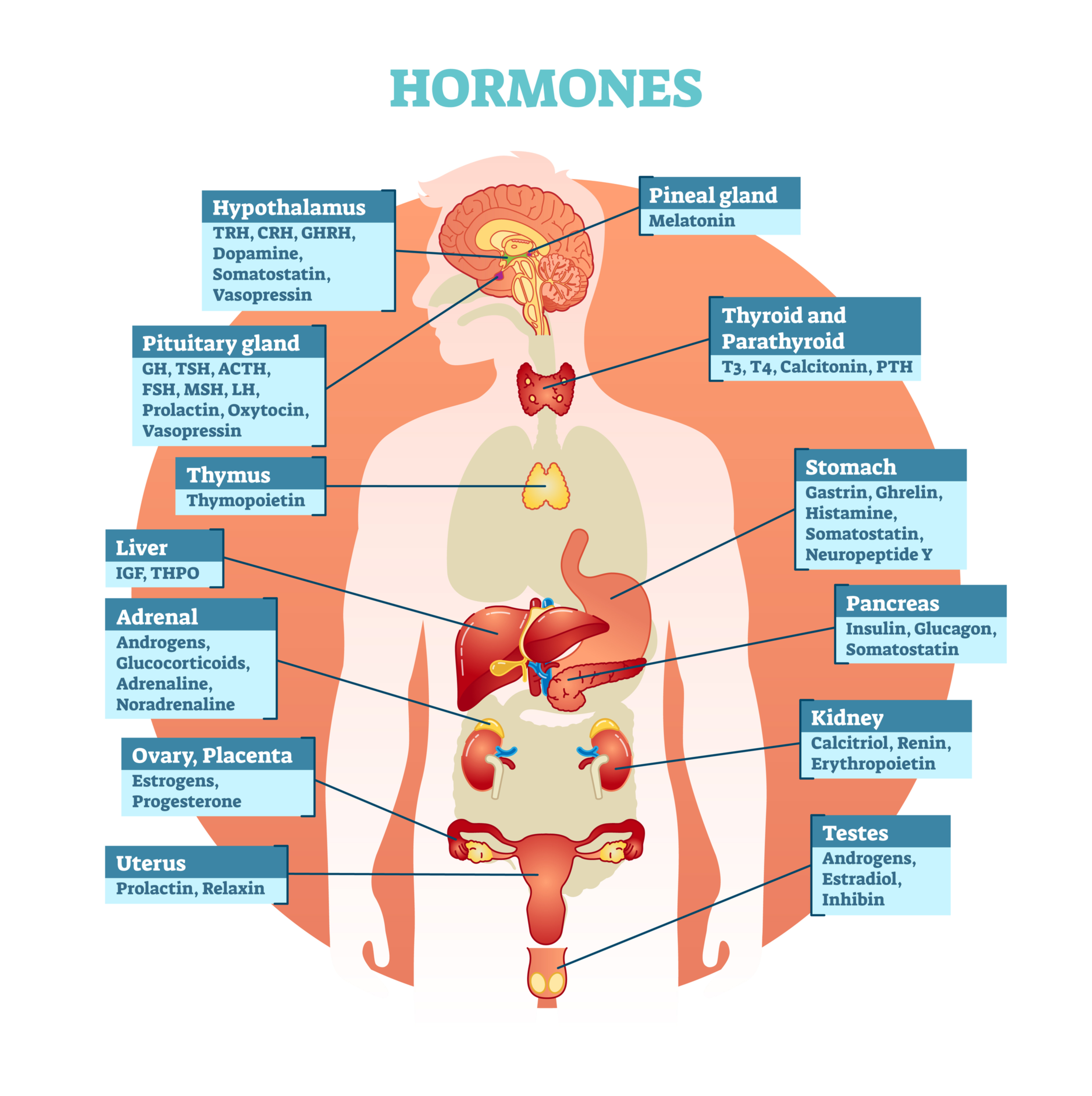
So far, we have examined the pituitary (anterior and posterior), thyroid gland, and parathyroid glands.
Examine this figure, and for these endocrine organs, list the hormones they produce:
Pancreas
Adrenal Glands (2)
Testes (2)
Ovaries (2)
Put together the information from this webpage and the previous page to identify these endocrine organs, determine their locations, and list the hormones they produce.
Start this Guide’s first journal assignment here
Journal Page #7: Homeostasis Analogy
An analogy is a comparison of two otherwise unlike things to explain or clarify a concept. Analogies are frequently used in science education to teach challenging concepts. Doctors frequently use analogies to explain medical conditions to a patient: The heart is a pump; the kidneys are like filters; vaccines are weapons in our arsenal; a treatment is on target.
For this journal page you are developing your own analogy that represents homeostasis in the human body. You can brainstorm and/or scan the web for ideas, and then develop the analogy further for this assignment.
Your analogy is intended to teach homeostasis to someone who is not familiar with the concept. You can tell a story, draw a comic strip, or make some other representation of your homeostasis analogy.

You are turning in:
- A representation of your homeostasis analogy (story, comic strip, drawing, etc.).
- An explanation of your analogy that clearly depicts how the analogy explains/clarifies the homeostasis concept.
The next section links stress and metabolism to the endocrine system and hormones.
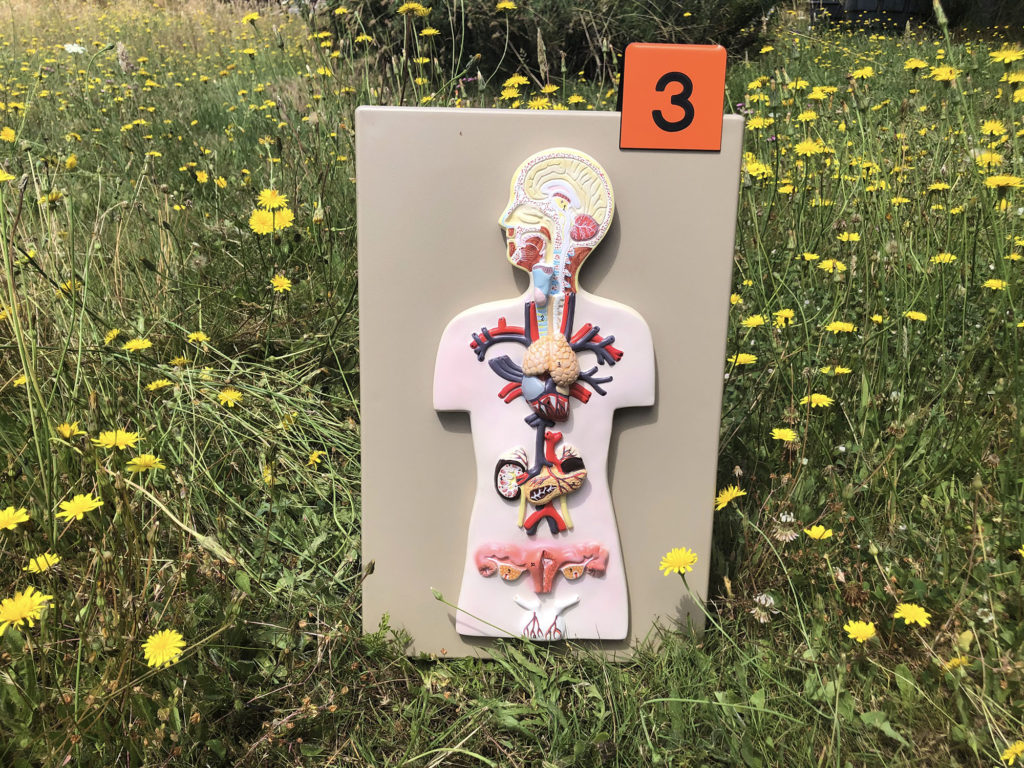
Check your knowledge. Can you:
- locate various endocrine organs in the body?
- explain how the nervous system and endocrine system connect, why this is important, and the hormones produced by the pituitary?
- describe what hormones are and list the hormones produced by various endocrine organs?



